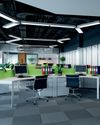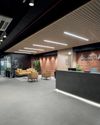
With an increased focus on energy efficiency, nations across the world have set an ambitious target to reduce 30% of its energy use by 2030, which could result in a minimum of 1.7 terawatt-hours of energy savings and a reduction of one million tonnes in carbon emissions.
These targets are extremely essential in combating the ill effects of climate change, especially given that the existing global building stock is a leading contributor to greenhouse gases (GHG), generating approximately 40% of annual global GHG emissions.
Now, take into consideration that approximately two-thirds of the buildings that exist today will still exist in 2050.
There’s no doubt about the fact that even if every single building constructed from today is energy efficient – which is a stretch in itself – action still needs to be taken on the present-day buildings that are “fuelling the fire of global warming”.
On average, heating, ventilation, and air conditioning (HVAC) contribute approximately 33% of a building’s total energy consumption, with major appliances such as water heating and freezers accounting for 18%, and lighting taking up an additional 10% of the power usage.
At the peak of their glory, the skyscrapers and towering buildings defining our skyline would have been well within their energy efficiency parameters, but given that many of them are now marking their 35th to 40th birthday celebrations, and are on the cusp of second childhood, the time has come to revisit their vitals – the electricity, mechanicals, and plumbing – which are keeping them alive and functioning.
Fit-out vs Retrofit vs Refurbishment
This story is from the May 2021 edition of Commercial Design.
Start your 7-day Magzter GOLD free trial to access thousands of curated premium stories, and 9,000+ magazines and newspapers.
Already a subscriber ? Sign In
This story is from the May 2021 edition of Commercial Design.
Start your 7-day Magzter GOLD free trial to access thousands of curated premium stories, and 9,000+ magazines and newspapers.
Already a subscriber? Sign In

WORKING TOGETHER
Professor Louise Valentine, Head of the Design School at Heriot-Watt University, on the importance of inclusive design in the workplace

WHERE CREATIVITY WORKS
Alhad Gore of Beyond Design Architects & Consultants brings his architectural expertise to life in the new office for Atul Patel Architects, blending functionality with creative flair to craft a workspace that inspires innovation and collaboration

FACILITATE INTELLIGENCE
How AI is redefining the future of facility management

DESIGNING A BETTER FUTURE
How inclusive office designs are shaping the modern workspace

ADDED VALUE
Is a good project manager the secret to success for a complex commercial design project?

RECOGNISING EXCELLENCE ACROSS THE SPECTRUM
The Grand Jury Meet of the third edition of Commercial Design Awards, a cornerstone event in India’s commercial design landscape, unfolded amidst the awe-inspiring expanse of the Welspun Global Carpet Plant in Hyderabad.

A VISION FOR 'TOTAL BUSINESS ECOSYSTEMS'
Jitu Virwani, Chairman and Managing Director of Embassy Group, redefines India's commercial real estate landscape by pioneering integrated, future-ready, and sustainable business ecosystems.

AWFIS TO DESIGN, MANAGE 165K SQ FT OFFICE SPACE FOR NSE IN MUMBAI
Awfis Space Solutions Limited on Tuesday said it will design and manage 1.65 lakh square feet of office space in Mumbai for the National Stock Exchange.

MACROTECH ACQUIRES 2.8 ACRES IN HINJEWADI
Realty developer Lodha, listed as Macrotech Developers, has acquired a 2.8acre plot of land in Pune's Hinjewadi area from Paranjape Schemes.

EMBASSY OFFICE PARKS REIT APPOINTS RITWIK BHATTACHARJEE AS INTERIM CEO
Embassy Office Parks REIT on Thursday appointed Ritwik Bhattacharjee as its interim Chief Executive Officer (CEO) with immediate effect, following Sebi’s order to suspend its CEO Arvind Maiya.